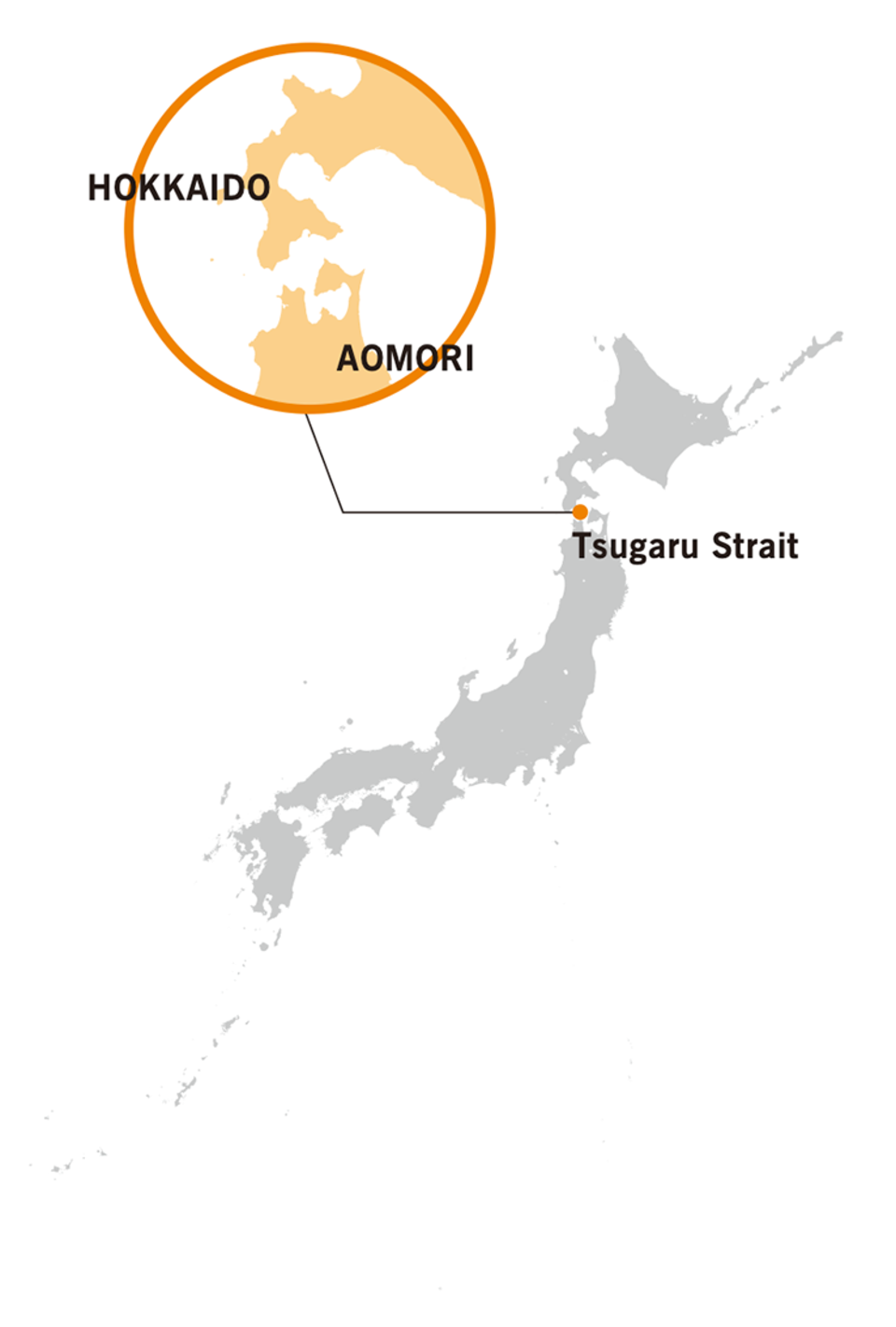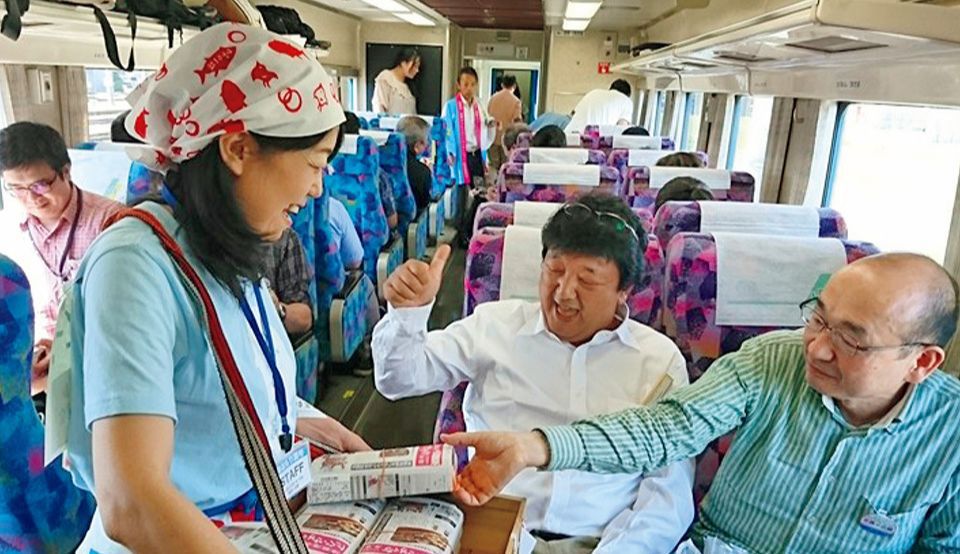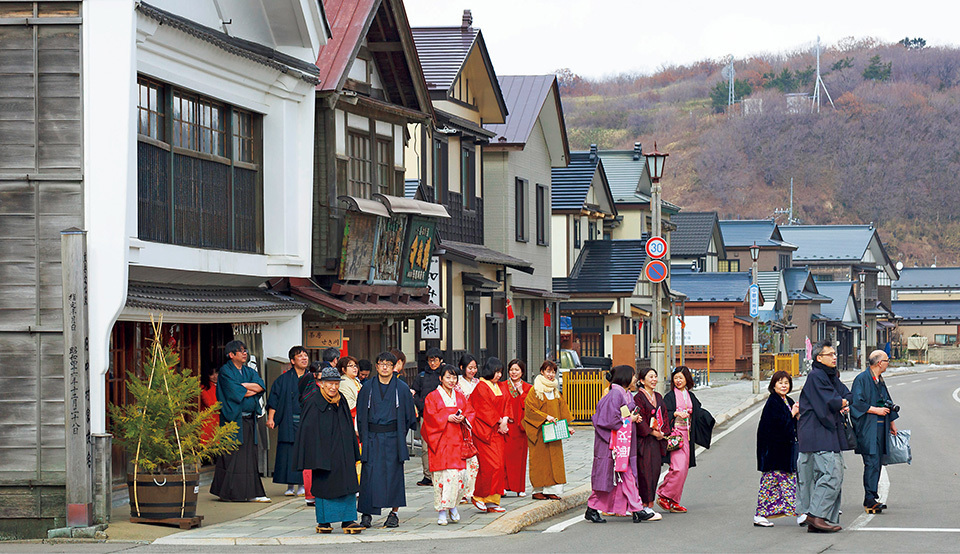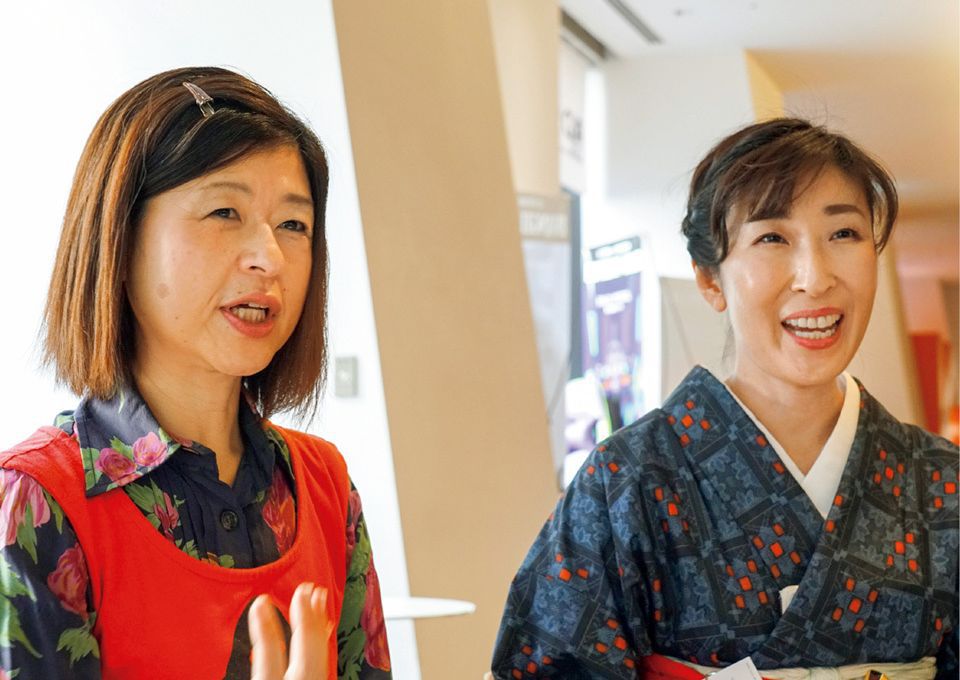The Tsugaru Strait is known as one of the best tuna fishing grounds in Japan. Here, a group of women are working hard to revitalize the towns where they were born and raised by various means at their disposal. They are the Tsugaru Strait Tuna Women’s Club.

The Tsugaru Strait runs between Aomori and Hokkaido Prefectures in the northern part of the Japanese archipelago. It is known for its fishing grounds, and the town of Oma, Aomori Prefecture is home to one of the most preeminent brands of bluefin tuna. The Tsugaru Strait Tuna Women’s Club, who named themselves after this local specialty, are engaged in activities to revitalize their communities. These women with a vision, residing in Aomori and southern Hokkaido Prefectures, banded together in 2014. They have since added to their numbers and now have nearly 100 active members.
“Each of us women has our own personality, but we got together like a school of tuna to start up this group. Our membership comes from every local community near the Tsugaru Strait, and we publicize each one of those place’s appeal. In addition to creating more energy and wealth for our communities, our group’s purpose is to pass on our wonderful hometowns to the next generation.”
This is how founding members SHIMA Yasuko and SUGIMOTO Natsuko describe the group. Shima runs a lumbermill in Oma, while Sugimoto has been the proprietress of a traditional Japanese hot-spring inn for around 80 years in the town of Matsumae, Hokkaido. Both spent some time living away from their hometowns, but then came back to take over the family business. The reason for their focus on stimulating their towns is a major issue affecting regional locales: “The Hokkaido Shinkansen (bullet train) opened in 2016, providing direct high-speed rail access between Tokyo and Hokkaido, but there are no flows of people connecting the Shinkansen to the towns where we live. The Tuna Women’s Club is trying to encourage those flows.”

The Tuna Women’s Club has designed bento box meals prepared with local specialties.

They also organized tours where participants wear kimono as they visit neighborhoods with historical buildings.
The core of their work is a major project to hold 28 types of experience programs and events in 14 municipalities over a three-month timeframe. Examples of the activities include tastings of food favored by the feudal lords who once ruled these lands centuries ago, tours led by chief monks into temples normally closed to the public, and exercise sessions playing a traditional stringed instrument from the Tsugaru region. The original itineraries the women designed have earned rave reviews from both tourists and local residents alike.
The Tuna Women’s Club essentially engages in volunteer work only. Because their organization does not seek to turn a profit, there are no conflicts of interest or status, allowing members to concentrate simply on discussions about making their towns better. “However, it is important to take action after discussing. We are willing to work as leaders and will do our best in any difficulties,” said Shima and Sugimoto, smiling.
The Tuna Women’s Club has been an inspiration to others. Local high school students have started up town-revitalization projects, while university students have contacted the club about internship opportunities. This shows that their work is impacting the younger generation. Furthermore, the club’s actions have been commended for increasing interaction of people traveling between Aomori and Hokkaido Prefectures. This attention has recently led to invitations to talk at speaking engagements across Japan. And just like the tuna in the Tsugaru Strait that have to constantly continue swimming, the Tuna Women’s Club will keep up their work in a strong, energetic and brilliant fashion.

SHIMA Yasuko (left) was born in the town of Oma, Aomori Prefecture. After graduating from university, she worked in Tokyo, but later returned to Oma, where she took over the family lumber mill. SUGIMOTO Natsuko is from Matsumae, Hokkaido. After working elsewhere, she returned to her hometown and took over the family business, a traditional Japanese hot-spring inn visited by guests coming from as far away as other countries.

